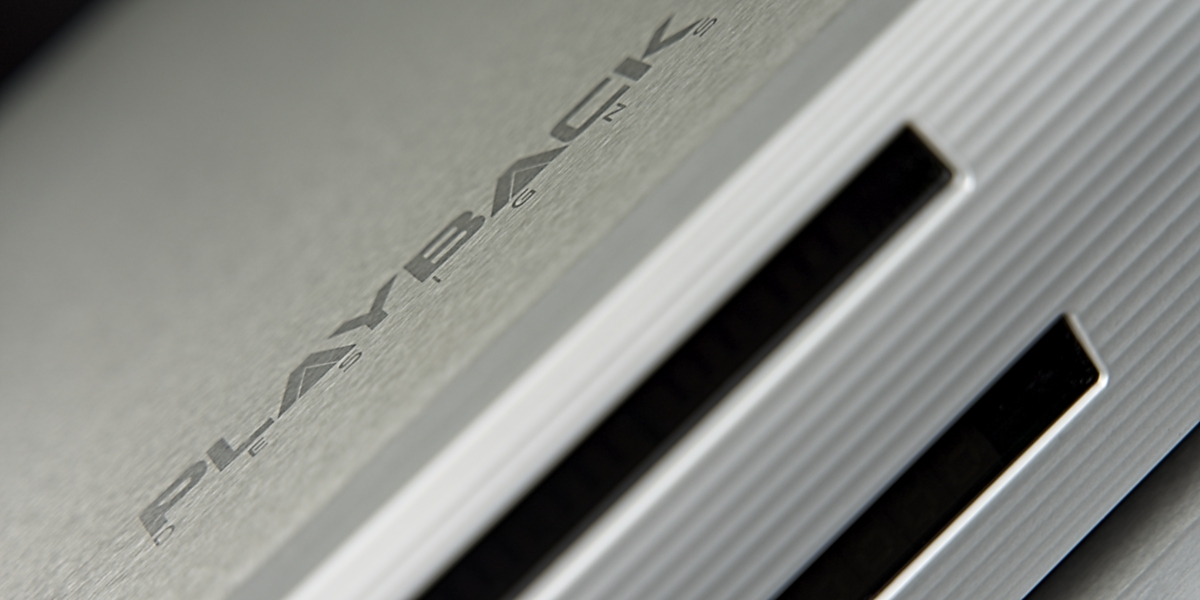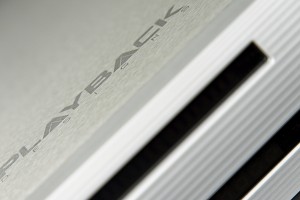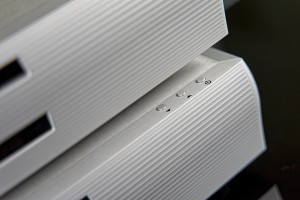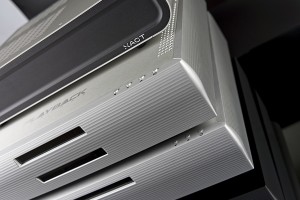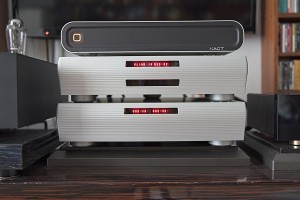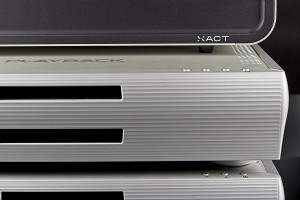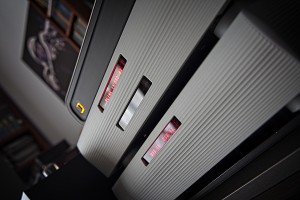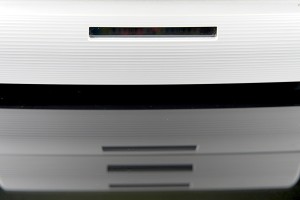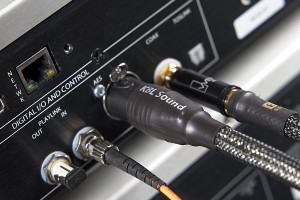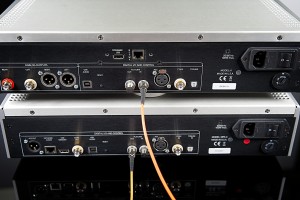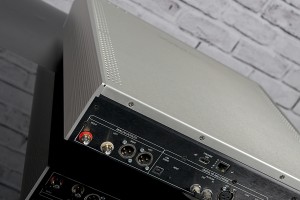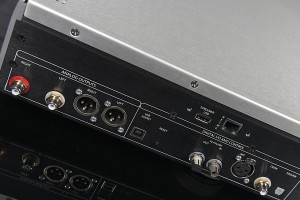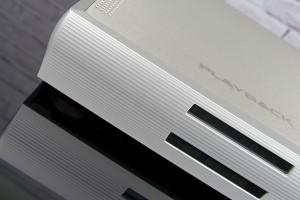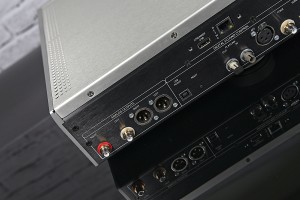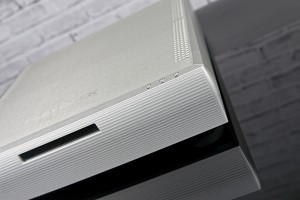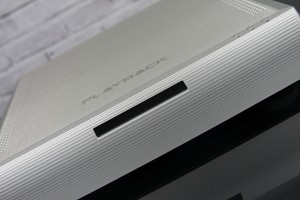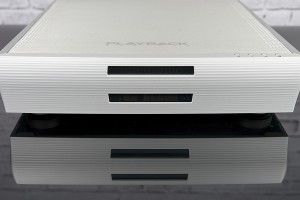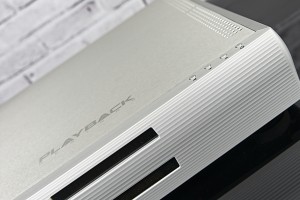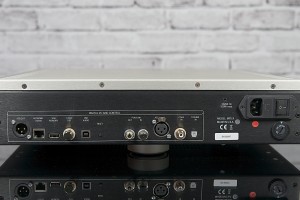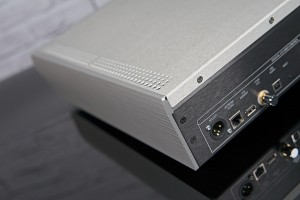It’s always exciting to get to know a new brand even if it is not new, but just new to me. For this review, I received two devices, Playback Designs MPD-6 and MPS-X, a D/A Converter, and a Digital Front End and Streamer. Let’s see what these two have to offer separately and combined.
Introduction
I am old enough to remember the times when Digital-To-Analog Converters were sort of a curiosity, at least the separate ones as obviously every CD Player featured one on board. Today they come in all shapes and sizes, cheap and super expensive, highly specialized, and all-rounders. What changed? The main music medium, that’s what. The physical carriers had to give way to more convenient, but also offering new opportunities, music files, the hi-resolution ones in particular. Even the latter come in various flavors either in PCM or DSD, in various resolutions, and the most popular ones come, in a quality that gets better and better, straight from the Internet, or various streaming services. To get all bases covered one needs a device that allows playing any music file, in any resolution, from a local server, hard and solid-state drives, pendrives, or from local and global web. Those of us who strive for the best quality sound (and don’t mind paying for it handsomely) add the top possible sound quality to that list.
There are some renowned brands that most audiophiles around the world know and appreciate. There is dCS, there is MSB, there is Polish LampizatOr, there is Weiss, Ideon Audio, and more. Yet the list of top-tier brands and devices is not that long. Among them, there is a brand that eluded me for a long time and did it so effectively that I’d never even had a chance to listen to any of their products, Playback Designs. I’d heard a lot of good things about them, yet there’s been always one issue – it’s an American company with no distributor in our country. Luckily, Marc Loubeau from Prestige Audio Diffusion decided to lend me a hand and delivered not one, but two devices by Playback Designs, MPD-6 DAC and MPS-X Digital Front.
Before we get to these, since many of our readers may be in a similar position to me in terms of knowing anything about the Playback Designs, let me share what I learned about them. The man behind the brand, its CEO and chief engineer, is Andreas Koch. Mr. Koch has been involved in the audio business since 1982, as at the time he started working for the famous Studer ReVox in Switzerland. It was there that he was tasked to develop the world’s first fully asynchronous digital audio sample rate converter, as well as one of the first filter banks for digital audio. Later some of the same ideas were used in audio compression algorithms such as MP3, AC-3, and others.
After leaving Studer Revox, he moved to San Francisco to work with Dolby Labs. In 1985 he built all the digital signal processing of the AC-1 encoder and decoder (delta modulator). This was a professional digital audio compression scheme used for television transmission and Dolby’s first highly successful digital audio product. In 1986 he built the hardware for the very first incarnation of what is today the widely used AC-3 compression algorithm. In 1987 he resumed his work for Studer ReVox in Switzerland where he managed the development of a professional digital audio tape recorder which was a 48-channel DASH format on 1/2 inch tape. For the next two years, he was involved in the market and technology research for hard disk (PC) recording in professional applications.
In 1989 he transferred to Studer Editech in Menlo Park, California, where he managed a group of engineers designing the ultimate hard disc recorder for professional post-production applications. It was launched as “Dyaxis” in 1992 and it is still used today. The user interface was so revolutionary that it was copied by many competing products still produced today. In 1993 his services were required by Sony in Florida, where he oversaw product development for professional audio products and launched various mixing consoles. In recognition of his achievements Sony relocated him to San Francisco in 1997 where he started and managed the development of the world’s first 8-channel DSD recording/editing/mixing machine, “Sonoma”. It is still used today in studios throughout the world and has been used for most SACD releases. He designed all the digital parts of A/D and D/A converters that helped establish DSD as an audio format for SACD.
He followed that up by expanding the Sonoma to 32 channels of DSD on a single PC. Andreas also participated in all standardization committees for SACD in conjunction with Philips. In 2003 Andreas decided to go into business for himself as an independent contract engineer. For the next four years, he designed all of the digital components, algorithms, and architecture for EMM Labs digital audio products for professional and audiophile use. He designed and implemented various revolutionary algorithms for sample rate conversion (SRC), a discrete D/A converter, and a unique architecture for clock management from digital audio transmission inputs. Finally, in 2008, Andreas Koch formed Playback Designs and launched an integrated SACD/CD player with various digital inputs that incorporated all the experience, knowledge, and algorithms Andreas gathered and developed over the last 25 years, right from the onset of digital audio. Ever since the Playback Designs brand has been known for its excellent digital audio products.
The point is, from everything I’ve known, and learned about Mr. Koch and his brand, the name Playback Designs should always be mentioned along with the ones I mentioned at the beginning, but at least here, in Europe, it is not really the case. As we all know, recognition in the audio business, as much as in most, if not all, other industries, is dependent not only on how good and competitive the products are but also on successful marketing, having the right distributors, and so on. That’s why I wanted to get to know some of the Playback Designs products and assess whether they were as good as some say and whether they belong to the same echelon of top-tier digital audio components as the more famous competitors.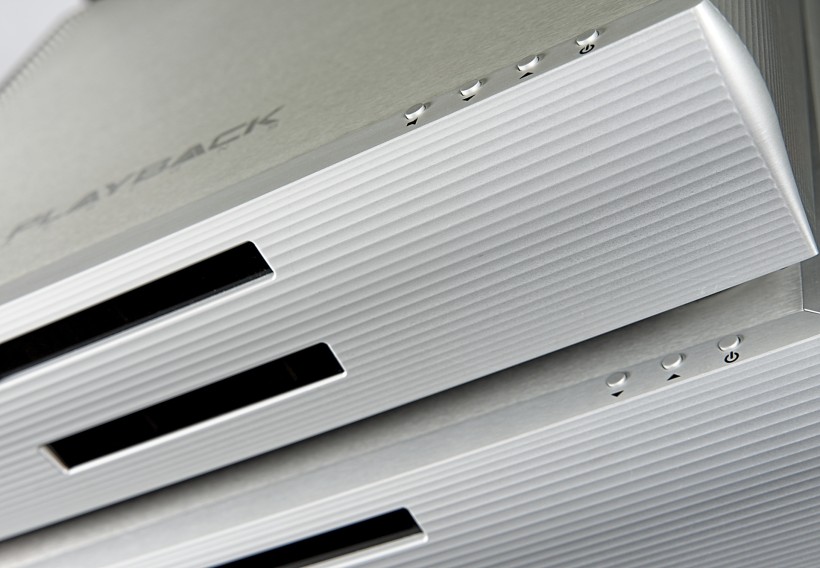
The current range of Playback Designs includes the top Dream Series, and the Edelweiss Series (one that includes the tested components). Until recently there was also an entry-level Sonoma Series, but as I learned it is now obsolete although a very good Analog to Digital Converter for fans of LP & Tapes (ADC PINOT) is still available. Apart from the top line that features also a stereo power amplifier, all of them include primarily digital components, D/A converters, streamers, SACD/CD Players, Music Servers, and Digital Front. The Edelweiss line includes three devices and I got to review two of them. One is MPD-6 D/A Converter that includes digitally driven analog volume control, and an optional streamer module called Stream-X2. The second reviewed one is MPS-X, called a digital front/streamer as its job, on one hand, is to improve the quality of a digital signal later sent to a D/A Converter, on the other it is also a stand-alone version of the Stream-X2 board. In other words – two-in-one.
The third one is MPS-6 Player which seems to offer everything MPD-6 does (including the optional streamer module) plus a high-quality SACD/CD transport. The way I see it, one can buy either MPD-6 if CD and SACD are of no interest, or MPS-6 if both, digital files and physical medium are to be used. MPS-X is a stand-alone device and its job is to improve the quality of any digital signal. In other words, it is sort of an upgrade for either of the other two or, possibly, for any other DAC, although users of those won’t be able to benefit from Digital Playback’s own PLink interface which, spoiler alert, proved to outperform other ones.
Design and Features
MPD-6 DAC /Streamer
All three devices in the Edelweiss line feature almost identical chassis. The only difference (apart from connectors on the rear sides and a drawer in the MPS-6) is a single display in MPS-X, while the other two feature double ones. These are quite large, full-size, sturdy devices using well-made metal chassis, resting on four, anti-vibration feet. The operation of the MPD-6 is carried out using a remote control, but there are also four buttons on the top of the chassis. It is a discrete D/A Converter featuring Playback Designs’ proprietary digital algorithms and differential analog output stage with numerous solutions sourced from the top Dream series. It offers as many as five digital inputs that include Audio USB, AES/EBU, Coaxial SPDIF, and Optical TosLink, as well as a so-called PLink that is compatible with other Playback Designs devices.
The MPD-6 can also be fitted with an optional module, Stream-X2, that turns it into a streamer and adds yet another feature, as the DAC becomes RoonReady. It allows for the usage of streaming services such as Tidal, Qobuz, Deezer, and vTuner that can be controlled via an app on a tablet. It also enables audio file playback from NAS via DLNA and UPnP (renderer and server function) protocols. The inputs support PCM up to 384kHz and DSD up to 11.2MHz (USB), PCM up to 192kHz and DSD via DoP (AES/EBU and Coaxial), and PCM up to 96kHz (Optical Toslink). The proprietary PLINK supports all native sample rates. The manufacturer delivers a proper cable for this connection. It is an optic fibre-based one, but of much higher quality and bandwidth than the ones used for Toslink connections hence its ability to support any native resolution of a transmitted signal. As the manufacturer explains, for PLink they use a much lower bandwidth protocol than the specified limit of the media to further increase robustness against jitter.
MPD-6 offers also both, balanced (XLR), and unbalanced (RCA) analog outputs. As is quite common in today’s DACs, the Playback Designs features also a volume control that allows it to be used to directly drive a power amplifier. The significant difference is, that this is a digitally driven but analog (!) volume control. I know, that many manufacturers offer data supporting claims that their fully digital solutions outperform analog ones, but, for my ears, the (good!) analog volume controls often sound better than digital ones. Another key component is the Playback Designs’ proprietary clock generator, jitter, and buffering technology (PDFAS) that cleans up any digital input signal before it enters the D/A circuit. The design is also future-proof and its software can be updated once the manufacturer prepares a new one.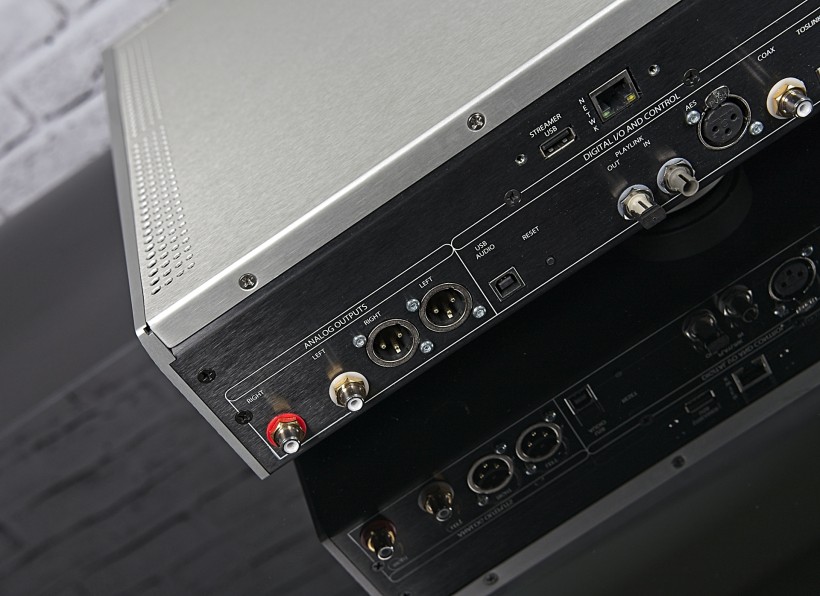
MPS-X
The other device is a bit more tricky, and by that I mean it’s not one of the „standard” components one finds in most setups. Both MPD-6 and MPS-6 already feature a proprietary clock generator, jitter, and buffering technology (PDFAS), and yet… MPS-X is, as the manufacturer calls it, a digital front end that sort of doubles in the task. Its job is to receive a digital signal, enhance it, and deliver it to (an input of) a D/A Converter. The obvious question is, whether it makes sense and can make a real difference. But let’s leave that for the „Sound” assessment part of this review. For now, let’s focus on the features of MPS-X.
As mentioned before, MPS-X uses the same chassis as the other two Edelweiss components with the only difference being a single display (and no transport drawer). It offers several digital inputs including USB (compatible with Windows, Apple OS, Linux, and supporting PCM up to 384kHz, and DSD up to 11.2MHz), Ethernet for streaming (Tidal, Qobuz, Deezer, vTuner, NAS), AES/EBU and Coaxial inputs (PCM up to 192kHz, DSD via DoP), Optical Toslink (PCM up to 96kHz), and PLink for all native sample rates. It is also a RoonReady device. The input signal is treated using PDFAS, an already-mentioned proprietary technology that buffers all digital inputs and significantly reduces any clock jitter. Using the proprietary PLink connection also adds a layer of galvanic separation. The device outputs signal via PLink, AES/EBU, or Coaxial output. The former is a recommended way to connect MPS-X with any Playback Designs D/A Converter, while AES/EBU and Coaxial can be used with any DAC.
Another feature is a built-in Stream-X2 module with full support for PCM up to 384kHz and DSD512. It allows using streaming services such as Tidal, Qobuz, Deezer, and vTuner that can be controlled via an app on a tablet (Android or iOS), as well as from NAS via DLNA and UPnP protocols (renderer and server function). If you looking to acquire both, MPD-6 (or MPS-6) and MPS-X you won’t need a streamer module for the DAC.
Sound
Both Playback Designs products were tested in my reference system (you can find the detailed description below the review), but I also used some additional components that I reviewed at the same time. So alternatively to my custom server with Roon, I used JCAT’s XACT S1 (with proprietary OS and JPLAY playback app). My regular power cables were replaced by a significantly better reference KBL Sound Extrema. Apart from my amplifiers – GrandiNote Shinai and Circle Labs P300 and M200 set, I also used GrandiNote Supremo, MastersounD Icona, and Accuphase C-2300 and P-4500 power amps. Ethernet and USB (Sapphire and Ruby) cables from David Laboga Custom Audio, AES-EBU and coaxial from KBL Sound (Prism), analog interconnects and speakers cables by Soyaton (Benchmark), and KBL Sound (Himalaya II) connected devices in the setup. What you will read below are common conclusions from all listening sessions as describing them for each setup/session separately would turn this text into a book.
Even though I got these two Playback Designs devices as a set I decide to try both separately in my setup first and only then move to listening to their combined performance. MPD-6 DAC’s sparring partner is my own LampizatOr Pacific recently upgraded to the „2” version. As MPS-X’s role is to improve the quality of (almost) any digital signal that reaches the D/A Converter I can use it also with Pacific 2. I can’t use the proprietary PLink to connect MPS-X with LampizatOr, so instead I use high-quality coaxial and AES/EBU (to find out which connection works better) digital interconnects by KBL Sound from Prism line. It should tell me whether the Playback Designs can actually improve the quality of the signal fed to my DAC. Ultimately, I want to find out how good MPD-6 alone is, and if and what exactly MPS-X can further improve or enhance in its performance.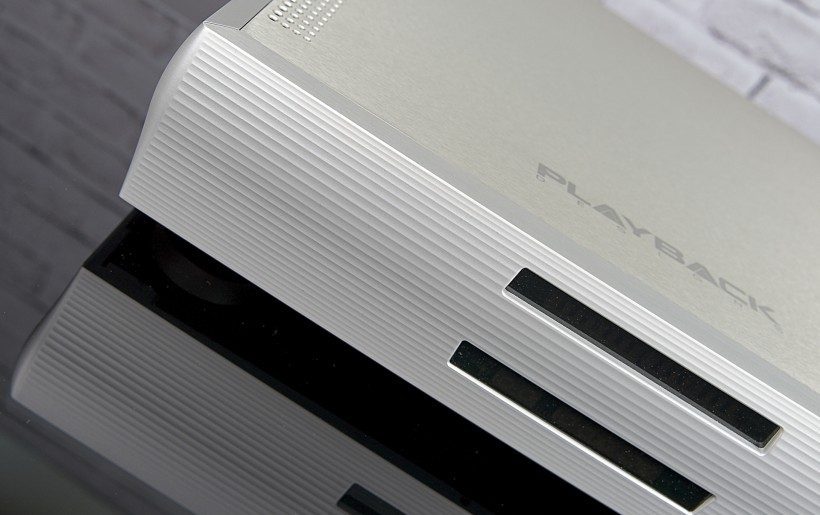
MPD-6
So first, I replace my trusted LampizatOr Pacific 2 with Playback Designs MPD-6 D/A Converter using it as a Roon endpoint, or in other words, connecting it via LAN using David Laboga Digital Sound Wave Sapphire Ethernet cable (see HERE). For those who’ve read some of my reviews it is probably clear, that I highly appreciate my DAC, and let me add that after upgrading it to the „2” version my devotion towards it increased even further. Every one of the competitors coming for reviews has been compared to it and so far none outperformed the LampizatOr. Some offered similar levels but a different flavor if you know what I mean, but none was clearly better. This brand’s „specialty” has always been DSD playback, although recent models deliver fantastic performance with both, DSD and PCM files. The man behind Playback Designs, Andreas Koch, is also known as „the DSD magician” so I am really curious how these two devices compare when playing this format.
I play several DSD tracks switching between both converters and I can’t really decide which DAC is better or even which one I prefer. There are some slight differences, for example with LampizatOr the soundstage is wider and the forefront seems placed a bit closer to me, hence larger and more tangible, but with MPD-6 the depth of the stage is impressive, and listening to the performers from a bit bigger perspective has its charm as well. It seems to me that with my DAC the high tones are just a touch sweeter (it’s a tube DAC after all), and Playback Designs’ bass is a tiny little bit tighter.
The biggest, yet still not a huge difference is noticeable in the midrange. With my DAC it is richer, more palpable, with MPD-6 it is better pronounced, more explicit, if you will, and even more transparent. To be very clear – neither LampizatOr is unnaturally rich, nor Playback Designs sounds thin, the former doesn’t blur details, and the latter doesn’t throw them in the listener’s face. Both do an excellent job of delivering very natural, immersive performances with accents placed differently. I am overblowing these differences trying to give you an idea about the rather subtle distinction between the two. And one more thing you should notice – LampizatOr is connected via USB to my server, while MPD-6 receives data over LAN so the comparison is not ideal.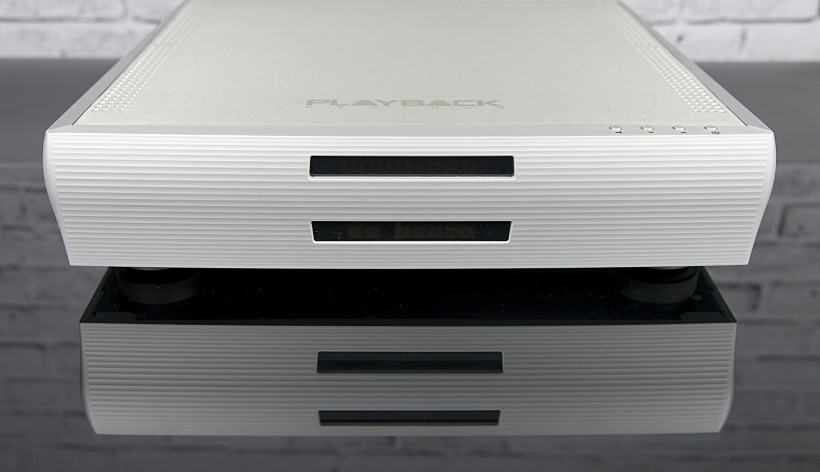
The test is not about comparing the two D/A Converters but for me, it is important to learn first if and how these two differ. It is very promising to find out that Playback Designs MPD-6, unlike most DACs I reviewed in the past, performs on a similar level to my reference DAC. Now I can focus solely on the American device. Actually, I can’t really do it as its performance just grabs my attention the moment music starts to play. It is a PCM 24/96 version of the Steve Gadd & Mika Stolzman’s „Spirit of Chick Corea” album. On one hand, it sounds spectacular with every instrument’s voice being so deep, powerful, and so pure at the same time. On the other hand, though, it sounds… simply put „just right”.
It may not say much about the specifics of the performance, but if you’re about a musical experience that is complete, natural, and involves you in whatever the creators of music you listen to wanted to convey, MPD-6 is definitely a way to go. At least it is for me. It is very easy to forget about my job, about assessing the product and getting lost in the music and emotions it’s filled with. Obviously, this is the final effect, a combination of a lot of things that the Playback Designs team did right. A wonderful, refined, and fully immersive presentation like very few I’d ever heard. Since it’s a review that is supposed to help you decide whether this device is worth your attention, I shall try to offer you some specifics.
First of all, it is an incredibly resolving sound. It starts with one of the audiophiles’ favorites, namely the pitch-black background or in other words with an effective elimination of noise. That creates proper conditions for delivering an abundance of information, details, and subtleties that are served in a clear, well-articulated manner. That on the other hand confirms low jitter, or an excellent job done by a word clock. Yet, I wouldn’t call the sound of MPD-6 analytical. The presentation is not about overwhelming a listener with details but rather about using maximum information to deliver as rich and complete, hence natural presentation as possible.
It is also very precise in terms of the definition of every sound, of its particular place in the mix, yet the performance as a whole is beautifully coherent, and fluid. It’s the right mixture of making sure that all the information from a recording is delivered in an unchanged, uncolored, non-distorted way, with putting it all together into a highly complex, orderly, dynamic yet smooth and natural performance. No matter the music genre, as long as the recording is of at least decent quality and to my liking, I sit back and relax in my chair in most cases listening to much more than just one track from a selected album. MPD-6 seems to be incredibly versatile and delivers each track in a highly enjoyable way. Listening to it is also particularly interesting as it plays every piece in a way allowing me to appreciate the intentions of people behind it.
However, when it comes to exciting performances I move to the edge of the seat waiting for things to happen, so to speak, particularly when I play tracks and albums I know by heart. And the MPD-6 every time does an excellent job of at least meeting but often exceeding my expectations. There is nothing worse than a boring presentation of a favorite piece of music, and nothing more thrilling than one delivered by a new component in a way that immediately reminds you why you love the recording so much. Long story short, I am never bored with the tested DAC, it keeps me engaged, and it keeps me smiling and happy.
No listening sessions for a review in my room can do without guitar music. In preparation for a coming live performance I will attend, I start with Rodrigo y Gabriela’s „Mettavolution” album. The first side is a perfect example of how dynamic, and energetic can a performance of just two acoustic guitars be. Any component, as well as the whole setup, has to be able to keep the crazy pace, follow the rhythm set by Gabriela’s playing, as well as deliver all the details of both musicians’ techniques. Again, MPD-6 does not disappoint. The presentation is teeming with tiny details and subtleties perfectly displaying both the skills and characters of the members of this Mexican duo. The sound is super-energetic reminding me of the live performance I attended in the past and preparing me for the coming one.
Have you ever listened to acoustic heavy metal? It may sound like a weird idea, but the „Krotona Days” track from this album will prove to you not only that it can be done but also that it can sound really good. Particularly when you have such an excellent D/A Converter as the MPD-6 at your disposal. It offers all those audiophile features, as I call them, that I’ve already mentioned, such as high resolution, transparency, clarity, great extension on both range’s extremes, excellent PRAT, impressive drive, and ease of playing anything one throws at it, and yet it perfectly combines it all into an incredibly musical, natural sounding, highly engaging whole.
The second part (or the other side on the vinyl I usually listen to this music from) is a beautiful suite based on Pink Floyd’s „Echoes”. MPD-6 offers me an incredibly deep sound of both guitars due to a lot of wood in their sound. Yet it beautifully differentiates each string pluck, each chord, each knock or slap on the guitar’s body. I love the energy that is so convincingly, or should I say, reliably conveyed. The whole performance has a very natural flow and a contagious rhythm that I can’t resist. Can it get any better (apart from live performance)? There is a way to check it. It’s time to involve MPS-X.
MPD-6 + MPS-X
From what I understand, MPS-X sort of does the same job in terms of eliminating jitter and precise clocking of the signal as circuits used in the DAC. So there shouldn’t be much of a difference, should it? Well, the very beginning of the „Echos” track that opens with single string plucks proves that the additional digital front end, as the manufacturer calls it, does make a significant difference. It’s not a surprise as such for me, as I use Ideon Audio 3R Master Time in my setup, and it also improves the quality of the USB signal delivered to my excellent DAC. Yet the scale of improvement is surprising. The clarity of each pluck, its weight and depth, all the acoustic „aura” around it, how it interacts with the surroundings – it is all way clearer now. To be clear, I was sure it was presented (almost) perfectly by the DAC alone hence I didn’t expect any further improvement before connecting MPS-X.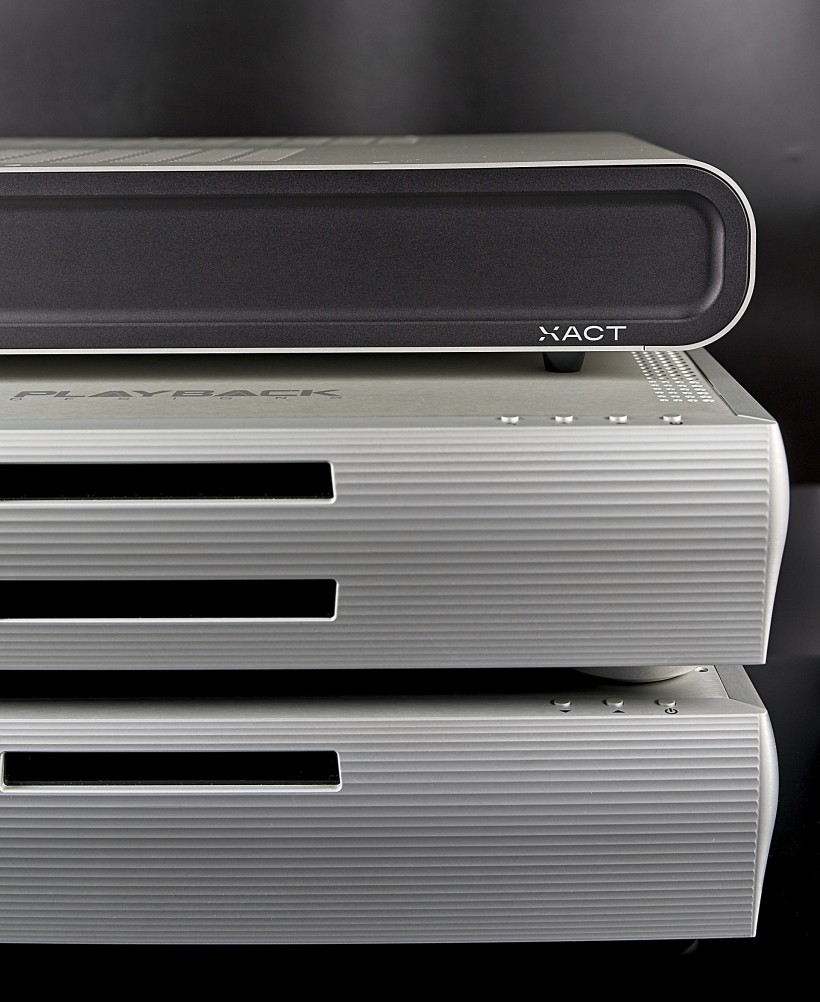
I play several acoustic albums, such as, for example, Hadouk Trio’s „Live A FiP” or Musica Nuda’s album of the same title. MPS-X makes music come (even more) alive – that’s the shortest, yet most accurate description I can offer. Again, all those albums sound great with MPD-6, but MPS-X adds even more realism and energy to the presentation. It better differentiates music at the micro level enriching the sound, and its flow. Taking the MPS-X out of the equation now, after I’ve learned of its influence is sort of painful. It takes time to get used to the sound of the MPD-6 alone and to appreciate how good it is already on its own.
I add MPS-X back to the mix and play some electronic music. First goes the soundtrack from „Bladerunner” by Vangelis. It may not be a truly audiophile recording but it’s pretty good, and I love the music (and the movie, obviously). The key challenge for the tested component is to present the unique atmosphere of this recording or to transfer it as all the fans, such as myself, remember it from the movie watched several times, without the visual help of a picture. MPD-6 and MPS-X combo delivers it in spades visualizing this dark, rainy world Deckard lives in. The voices in the spoken parts sound incredibly natural and surprisingly present. I can feel the grand scale of this electronic music that inspires recalling memories of particular scenes from the movie. It is one of many, most to be honest, albums that I have to listen to from start to finish. Even though I know it by heart I anxiously await what comes next, how will it sound with Playback Designs DAC and when I finally hear it it fully satisfies my expectations.
Another run at electronic music comes with the monumental Dead Can Dance album. It is presented with proper power and panache and it is done seemingly effortlessly. However dense the sound, however thunderous the bass, and however complex the musical structures, the music coming from the speakers is delivered in a very clean, orderly way offering easy in-depth access to the deepest layers of the mix. The spatial effects used in every track are presented in a convincing way creating a huge, deep space in front of me. Again, I love the vocals that sound truly natural and particularly expressive.
MPS-X + LampizatOr Pacific 2
In the last part of the test, I use Playback Designs MPS-X as a digital frontend for my LampizatOr Pacific 2 with JCAT XACT-S1 (see the review HERE) as the source of the signal. I connect the latter first directly to my DAC via USB and later connect the server to MPS-X also via USB and forward the signal to LampizatOr using KBL Sound Prism coaxial SPDIF cable. I play the excellent Renaud Garcia-Fons Trio’s „Arcoluz” (24/48 PCM) album. It sounds fantastic played by Pacific 2 alone. The sound is open, highly energetic, pure, transparent, resolving, but also smooth, naturally warm, and just incredibly enjoyable.
Now I make a switch – the USB cable connects XACT-S1 with MPS-X and the latter sends a signal to Pacific 2 via Prism coaxial cable. So there is one more cable and whole digital interface (coaxial) involved which complicates things and in many cases, it could negatively impact the sound quality. And yet, it is obvious immediately that the Playback Designs digital front end perfectly does its job. It’s like there is even more sound in the sound, as there is more essence to it, or to put it differently as if what comes from speakers becomes closer to a live performance. There is more energy in the sound, it is even more open, and it’s free as if there were some limiters there before that didn’t allow the sound to fully spread its wings.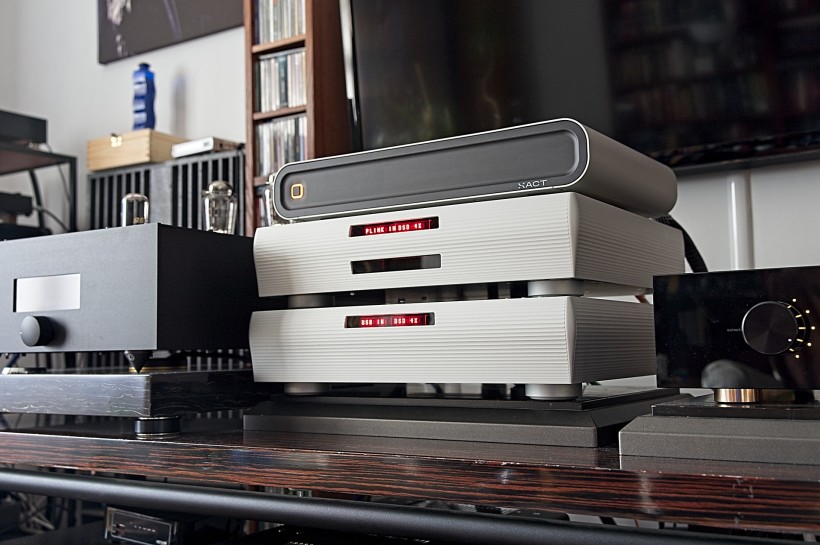
I go back to listening to my DAC without MPS-X and it still sounds incredibly well. It’s just that now I know it could sound even better with the American device „enhancing” the signal from a server for it, and that the latter does an even better or more advanced job than the Ideon Audio 3R Master Time does (obviously, MPS-X is way, way more expensive as well). The difference is similar to that I heard when comparing the PLink connection between two PBD components with AES/EBU and coaxial. The later, excellent digital interconnects by KBL Sound (Prism to be exact), provided top performance, as good as I ever heard via these links in my system, and yet PLink still added something more on top and was a clear choice.
Before we move to the summary, let me share additional information on the Playback Designs lineup or the latest addition to it, namely the USB-X4 interface. Why do I even mention it in the review of MPD-6 and MPS-X? Because for some on a tighter budget or those whose interest is focused on USB link, it may replace the latter. Obviously, it is a simpler device, not offering multiple digital inputs, but it does feature the newest generation PDFAS clocking technology for ultra-low jitter performance and PLink output.
What you do with it is that you can connect it between any music server with USB output and Playback Designs DAC featuring PLink input. USB-X4’s job is to completely isolate DAC from a server, and minimize jitter. It does not require a separate power supply, but a power inlet allows you to use a high-quality external PS which is said to improve its performance even further. I can’t attest to its performance but the manufacturer promises a „dramatic” improvement over a direct USB connection between a server and a D/A Converter. So if you can’t afford MPS-X or don’t need its full functionality, give USB-X4 a try. It will cost you only roughly 1/3 of the bigger device.
Summary
In my view, Playback Designs MPD-6 and MPS-X deliver on all fronts, clearly showcasing what the best digital devices of the 21st century have to offer. They tick all the audiophile boxes, but they also tick music lovers’ ones, which is not always quite the same. The DAC is excellent, one of the very few that I could see replacing my Pacific 2, although I would miss the tube-rolling option that makes the Polish device so exciting. Its presentation is incredibly resolving, transparent, and dynamic, but also natural, fluid, and coherent. It does support both PCM and DSD hi-res files, it features several digital inputs, and a feature I hardly mentioned, but one that in a short test proved to be a real added value, namely the excellent volume control. Finally, the Streamer module, installed in the reviewed unit, works flawlessly as well.
The MPS-X is, on the one hand, quite a costly upgrade, on the other, once you hear the improvement it still brings to the table even paired with such superb D/A converters as Playback Designs MPD-6 and LampizatOr Pacific 2, you will, most likely, consider it worth every penny. The presentation with it, especially when PLink is used, is simply better, more refined, richer, even more transparent, and natural. Both MPD-6 and MPS-X combined, deliver a stunning, exciting, sometimes even breath-taking performance that, in my opinion, will satisfy even the most demanding music lovers using top audio systems. This combo clearly deserves our Victor award and the only reason I am not giving it is the fact, that there is still the Dream Line in the Playback Designs portfolio and it is supposed, even if at the moment it is hard to believe, even better. So hoping that one day I’ll have a chance to review it too, I’ll keep the award for future use.
Prices (when reviewed):
- Playback Designs MPD-6 DAC (without optional streamer module): 17.990 EUR
- Playback Designs MPS-X Network Streamer Transport/Interface (without Remote Control): 13.990 EUR
- Playback Designs Optional Stream-X2 module for MPD-6 (also for MPT-8, MPS-8, MPS-6): 3.590 EUR
- Playback Designs USB-X4 external USB interface: 3.990 EUR * Prices for France, Monaco, Belgium and Switzerland
Manufacturer: PLAYBACK DESIGNS
Distributor: PRESTIGE AUDIO DIFFUSION
Technical specifications (according to the manufacturer):
MPD-6
- Up to 384kHz PCM and up to 11.2MHz DSD
- USB I/O, AES, Coax, TosLink, PLink I/O
- USB compatibility with Windows, Apple OS, Linux
- Balanced and unbalanced analog outputs
- Digitally driven, analog volume control
- Fully differential discrete DAC
- Optional internal streaming module
- Easy and intuitive remote control via iPad or Android
- Firmware upgradeable by end user
MPS-X
- USB I/O (PCM up to 384kHz, DSD up to 11.2MHz)
- USB compatibility with Windows, Apple OS, Linux
- Streaming (Tidal, Qobuz, Deezer, vTuner, NAS)
- PLink input for all native sample rates
- AES input (PCM up to 192kHz, DSD via DoP)
- Coax input (PCM up to 192kHz, DSD via DoP)
- Toslink input (PCM up to 96kHz)
- PLink output
- AES output
- Coax output
- Newest generation PDFAS clocking technology for ultra-low jitter performance
- Connects directly any Playback Designs DAC via PLink
- Connects to any other DAC via AES or Coax
- Recording software for file creation on a computer
- Easy and intuitive remote control via iPad or Android
- Firmware upgradeable by end user
Associated equipment:
- Digital source: a custom passive server with WIN10, Roon, Fidelizer Pro 7.10, JCAT NET XE, and JCAT USB XE cards with FERRUM HYPSOS Signature power supply, KECES P8 (mono) linear power supply for the server, JCAT USB Isolator
- D/A Converter: LampizatOr Pacific 2 +Ideon Audio 3R Master Time (USB signal regenerator)
- Analog front end: J.Sikora Standard MAX turntable, J.Sikora KV12 tonearm, J.Sikora KV12 MAX tonearm, cartridges: AirTight PC-3, Audiotechnica PTG33 Prestige, phono stages: Grandinote Celio MK IV, ESE Lab Nibiru V 5.
- Power amplifiers: GrandiNote Shinai, Circle Labs M200, Art Audio Symphony II (modified)
- Preamplifier: Circle Labs P300
- Loudspeakers: GrandiNote MACH4, Ubiq Audio Model ONE Duelund Edition.
- Interconnects: Bastanis Imperial x2, Soyaton Benchmark, Hijiri Million, Hijiri HCI-20, KBL Sound Himalaya 2 XLR, David Laboga Expression Emerald USB, David Laboga Digital Sound Wave Sapphire Ethernet
- Speaker cables: Soyaton Benchmark
- Power cables: LessLoss DFPC Signature, Gigawatt LC-3
- Power: Gigawatt PF-2 MK2 and Gigawatt PC-3 SE Evo+; a custom power line with Gigawatt LC-Y in-wall cable; Gigawatt G-044 Schuko and Furutech FT-SWS-D (R)
- Network: Silent Angel Bonn N8 + Silent Angel Forester F1 + optical LAN isolator
- Racks: Base VI, Rogoz Audio 3RP3/BBS
- Anti-vibration accessories: ROGOZ-AUDIO SMO40 and CPPB16 platforms and ROGOZ AUDIO BW40MKII feet, Franc Accessories Ceramic Disc Slim Feet and Wood Block Platform, Graphite Audio CIS-35 and IC-35


